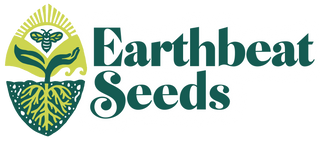The succulent, nutrient-dense leaves of Common Purslane are high in Vitamins A & C, as well as omega-3 fatty acids. Often characterized as a weed, this plant is in fact a choice vegetable to consume raw, juiced, or in pestos, with a lemony-tang and somewhat salty flavor. Cooked, they have a mucilaginous quality, and can be a good thickener. Note that, similarly to spinach, Common Purslane has a high oxalic acid content and can cause stomach upset when consumed in large quantities. They make fabulous pickles, or even a great addition chopped into sauerkraut. The habit of Portulaca oleracea is a dense mat that, based on water content of the soil, can either be low-growing or stand erect at a little over a foot high. Their fleshy leaves do an excellent job of storing moisture, and while they prefer wetter soils, they still are able to flourish in dry conditions. Given their resilience and ability to self-proliferate rapidly, Common Purslane has become an issue as an agricultural weed, and is best isolated from too much open earth lest it overrun your garden. Flowers of Portulaca oleracea are beloved watering holes for flies, small bees, and beetles— there is even a sawfly with the surname ‘Purslane’ whose larvae enjoy mining the plant’s leaves. Seeds can occasionally be a source of food for small birds.
This plant has long been cultivated in the Middle East and Indian subcontinent, both likely to be sites of its origin (potentially also Northern Africa). It is also featured in traditional recipes from Mexico, Greece, and Portugal. It has been used in Europe since the Middle Ages, and its first recorded identification in the US was written in 1672 (though likely Purslane had made its way there well before that). Nowadays, this vegetable’s span is global, crawling boldly even from sidewalk cracks. It potentially may have restorative effects drawing salt out from contaminated soils. This green will add a bright crunch to summer salads, and may just become your new favorite ‘weed’.









